cs6620 Project 2
Abe Stephens
Required Images
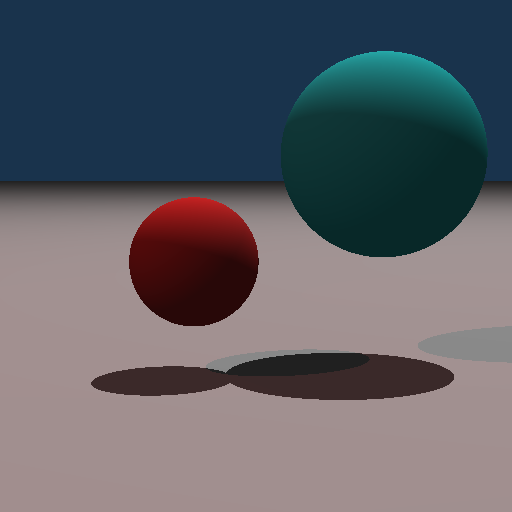
Lambertian Shading.
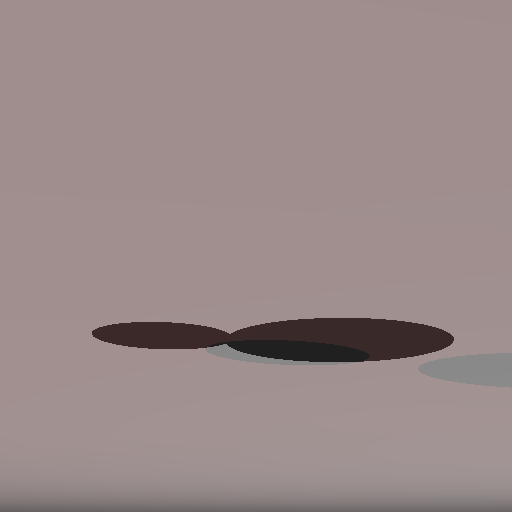
View from the bottom.
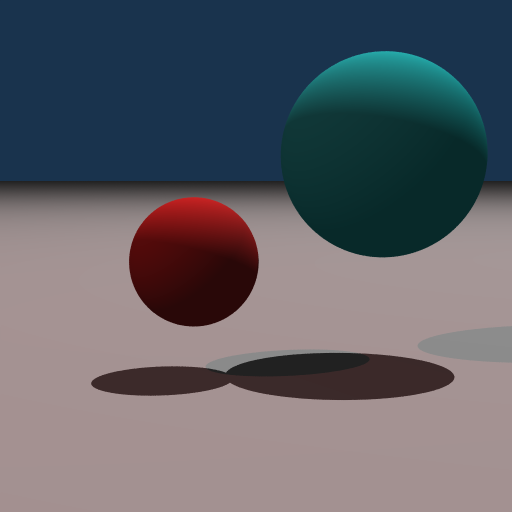
Creative Images
This is the same scene rendered with 64 samples per pixel rather then
just one. It took 81 times as long. (13.8 seconds)

This image was rendered using an ambient occlusion shader. I used 8
samples per pixel and 500 rays per point for the ambient occlusion
shader. (330.779 seconds with one thread.)

This image was rendered using the ambient occlusion shader for two of
the spheres and the plane, but using a lambertian shader for the two
other spheres. Again 8 samples per pixel, and 500 rays per point for
the ambient occlusion shader. This looks a little strange since the
point light source only applies to the Lambertian materials.
(388.013 seconds with one thread.)
The ambient occlusion shader was very expensive. I think using a better
sampling algorithm for the secondary rays would allow for fewer
samples.
Extra Images
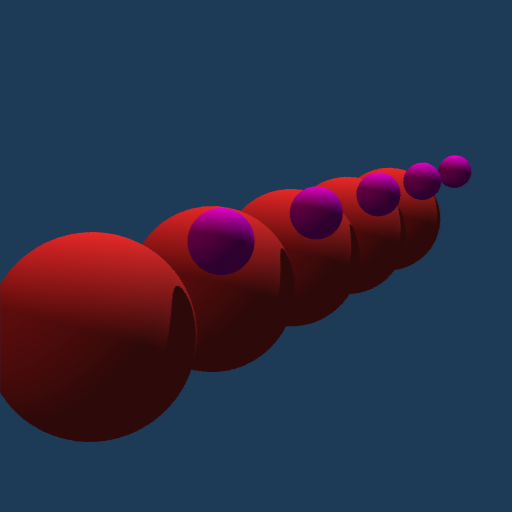
Another scene with Lambertian shading.
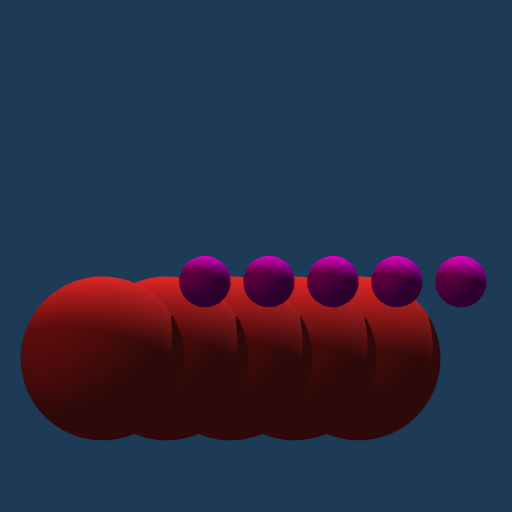
Same scene with orthographic camera.
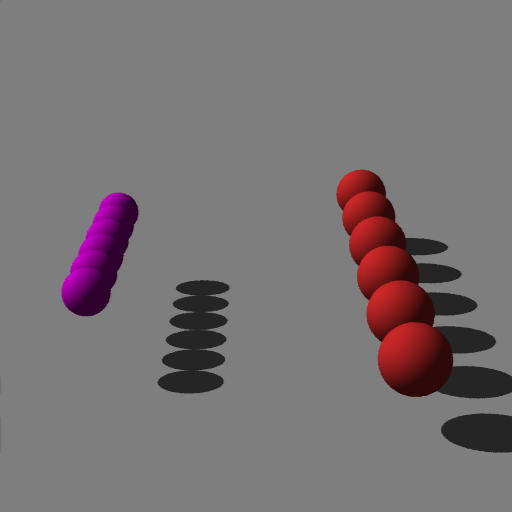
Scene with a direction light.
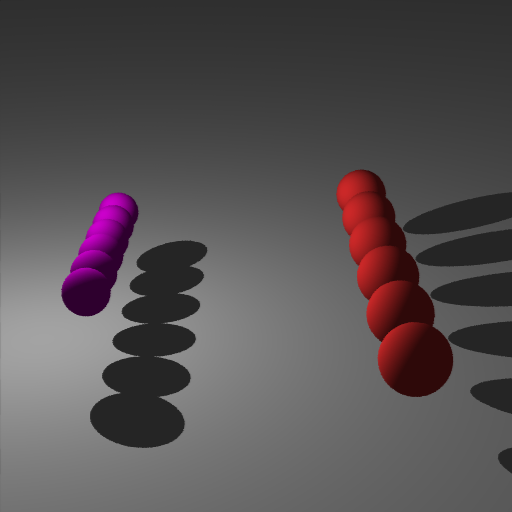
Same scene with a point light.
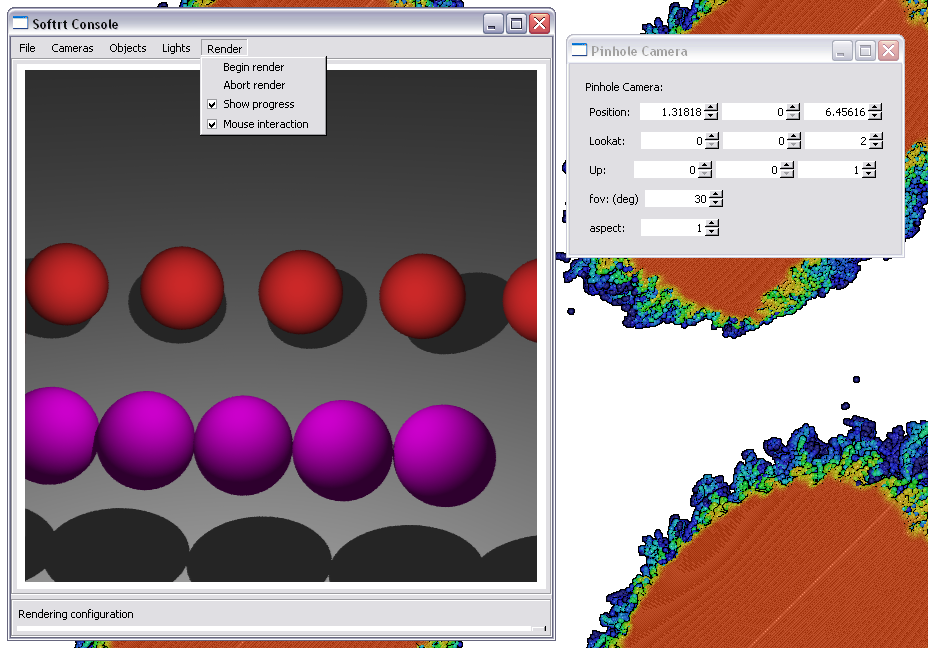
Screenshot of Fox frontend with mouse interaction. The mouse
interaction is still rough and my trackball is not great and could use
more work.
The front end consists of a main window containing the configuration
menus (the pin hole camera dialog is pictured on the left) as well as a
number of message handlers for manipulating the renderer. The two most
important handlers are begin render and abort render. These are called
by the image panel when the user engages the mouse. If the "Mouse
interaction" option is enabled every time the user releases the mouse
button, the renderer will be invoked and the frame will be refreshed.
The image pictured was generated using one thread with multisampling
and was not interactive. (~2.6 seconds per frame) If the "Show
progress" option is enabled, the image will refresh once per second.
The renderer runs in a different thread from the user interface, if the
user wishes to stop the rendering, the ui notifies the renderer to
abort, and the renderer stops after the current pixel.
Description
The performance template for the first required image is here.
The renderer is implemented in several static libraries, the gui
library contains all of the fox code, the renderer library contains the
basic renderers, (i.e. SingleThreadRenderer), the scene library
contains cameras, lights, and other scene objects. The renderer and
scene libraries may be invoked from both fox code as well as command
line frontends.
Base class interfaces:
FrameBuffer Provides access to individual pixels on either an onscreen window or a file buffer that will be written to disk.
Methods: write( ... ), commit( ... )
GenericRenderer Provides access to a renderer implementation. Responsible for managing all threads etc.
Methods: render_to( ... ), stop_render( ... )
Background Special object which is queried in the case that no other objects are intersected by a ray.
Methods: shade( ... )
Camera Cameras map framebuffer pixels to coordinates normalized in (0,1)x(0,1).
Methods: compute_ray( ... ) translate_position( ... )
Light Used by certain shaders for lighting calculations.
Methods: get_light( ... )
Material Encapsulates shader for a certain material.
Methods: shade( ... )
Object Base class for any container:
Methods: intersect_point( ... )
Primitive Base class for any geometry. Primitives are objects.
Methods: compute_normal( ... ). (Contains pointer to a Material)
SceneGroup Special object which holds Camera, Lights, and a root Object.
Additionally many objects have a preprocess method which is invoked by
the preprocess method in SceneGroup.
The design of the renderer closely followed the notes. For the
Lambertian shadow test, I moved the shadow ray start point a small
distance along the normal at the intersection point. As a result the
plane in the second required image exhibits the ABS behavior.
In the very near future I plan to add a MultiThreadRenderer class.
Total time: ~3 days.
Difficulty: The material in this assignment wasn't
difficult, but there was a lot of debugging.










